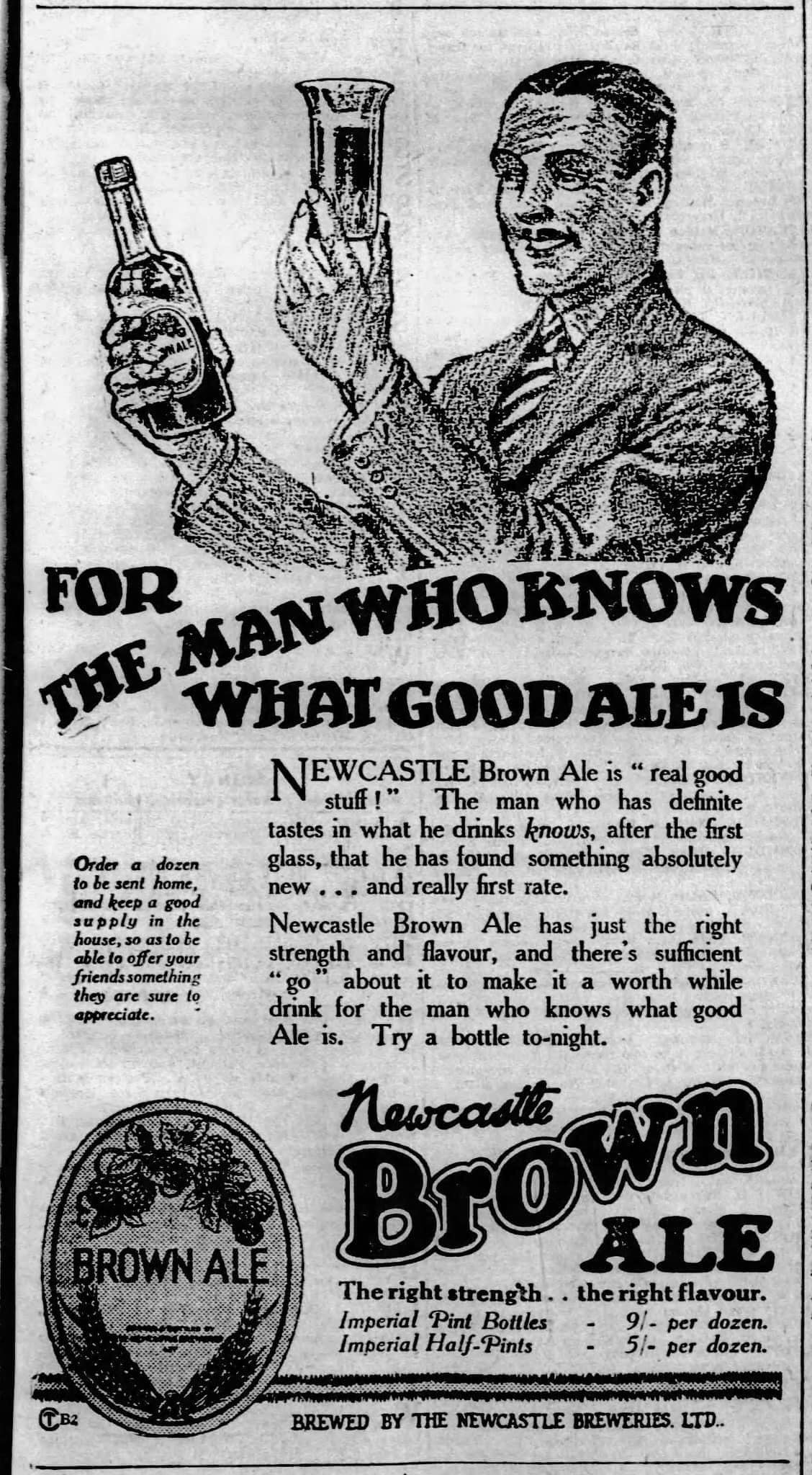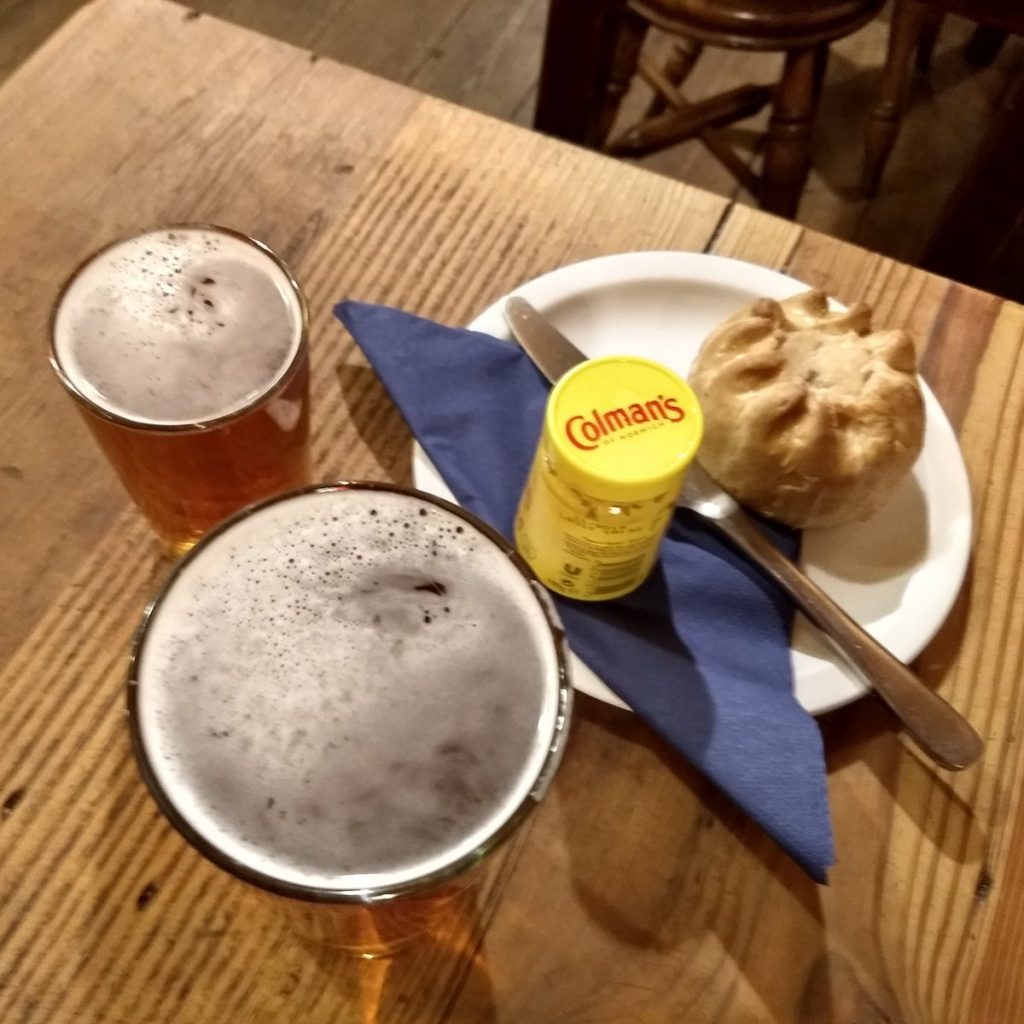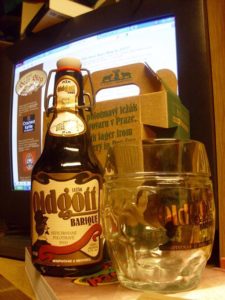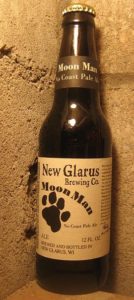 It will! Will it? Will it take? Will it last? Errr… will it even happen? Hmm… as I mentioned, we are going to try to see if there is any interest in having a go at reviving The Session. Stan‘s excited as are Matty and Alistair. Maureen is Sessio-curious. We’ll find out tomorrow. More about that later – but it does seem to be a reasonable thing to try as January fades while February looms. Does it loom? At least it’s shorter than January. Thirty days to March, baby. As of today. That’s all that matters to me now.
It will! Will it? Will it take? Will it last? Errr… will it even happen? Hmm… as I mentioned, we are going to try to see if there is any interest in having a go at reviving The Session. Stan‘s excited as are Matty and Alistair. Maureen is Sessio-curious. We’ll find out tomorrow. More about that later – but it does seem to be a reasonable thing to try as January fades while February looms. Does it loom? At least it’s shorter than January. Thirty days to March, baby. As of today. That’s all that matters to me now.
That image to the right (to your right, to the left to me) is from Newcastle’s Evening Chronicle of 24th May 1927, as reposted on FB by the Brewing History Society. That’s apparently about a month after the beer was first sold. Me, I myself too only drink it from a large labratory test tub while waxing my head with Brylcreem. Big news in beer the week was the recall of certain bottlings of the old Newkie Broon due to glass fragment contamination in some 550 ml bottles:
Ale drinkers who have purchased a bottle of Newcastle Brown Ale with the best before date November 30, 2025, as well as the correct batch code, should return their beer for a full refund. The affected batches are: L4321, L4322, L4323, L4324, L4325, L4326, according to the Food Standards Agency.
Further shocking news coming so soon after the UK market collapse of Brylcreem and large home use test tube sales is the story that gin sales are slumping as reported in The Times:
…on the chilly November day that I visit Sipsmith it is remarkably quiet. The distilling hall is empty and I spot about three workers in the large office at the back. Then there is the cold. “If we’re distilling, it’s usually lovely and warm in here,” Fairfax Hall, 50, one of three co-founders says as we sit down with our coats on. For they are not distilling: in fact they have already finished for the year. “Volumes fell more than we anticipated. We stopped distilling a couple of weeks ago [mid-November]. The industry has definitely slowed down. I mean, if you look at the numbers it is way off the peak.”
There are reasons for this, ranging from adherence traditional religious practices to social media’s influence on pop culture. Elsewhere, some continue to see rainbows and maybe even a unicorn or two.
Following up on the story that emerged last week, Stan has the background on the split between the BA and the AHA going all the way back to the tensions which played out in the corporate structuring and restructuring.
Many of the packaging brewers questioned the participation of homebrewers, Hindy wrote. “What role could a bunch of hobbyists play in a brewing industry trade association? Complicating the discussion was that the AHA was losing money. The AOB was subsidizing it. Mosher and (Rogue Ales founder Jack) Joyce argued that the homebrewers were the biggest fans of craft brewers, the first line of defense in any attack on the industry.” In the agreement that eventually followed, the membership would elect seven packaging brewery board members, four brewpub members, and the AHA would choose two board members.
Jeff gave a hopeful forecast: “…homebrewing is a wonderful hobby that satisfies our wholesome human creative urges…”
BREAKING: In British Columbia there is no drinking and bowling! Stop it!!
“The inspectors observed the patron do this – carry what appeared to be a glass of beer into the bowling alley area and consume the beer in that area – three times in eight minutes,” reads the decision by Dianne Flood, delegate to the general manager of the regulation branch. Inspectors reported the infraction was in “plain view and sight for any observer” and that a staff member working near the bowling alley should have noticed and spoken to the customer.
Three times! Entirely justifies the tens of thousands of dollars allocated from the public purse to prosecute these dastards.
Speaking of violations, is the Mliko pour an imposter? A new trend posing as tradition!?! Alistair never saw it when he lived in Czechia in the 2000s and Ron argues it was non-existent in the 1980s:
Something which never seems to get mentioned nowadays is the serving method. People go on about crap like “mlíko” pours – something I never came across in the 1980s and which I suspect was just made up recently. But not the reason why Czech beer was so drinkable: air pressure. Rather than CO2, air pressure was used to pump up beer from the celaar. Much like tall fonts in Scotland. The resulting half litre had a wonderful creamy head, but wasn’t overly fizzy. Being more like beer served through a sparkler in texture. Why does no-one lament the loss of this wonderful practice?
Why? Whhhhyyyyyyy??? Because no one cares, I suppose. Except Ron. And it is to be expected as there is one constant in beer [Greek Chorus (interjecting): “… well, two after money…“] and that is change. Face it. Breweries open and shut. Get build and get sold. Such is life. But apparently one regional, the makers of a gas station shandy and other more ancient if less than universally loved beers is now a focal point of complaint [Greek Chorus (interjecting): “…or perhaps just content creation…“] as owners of 36 years Molson Coors has announced it is shutting its Leinenkugel brewery in Chippewa Falls, Wisconsin:
Given that the firm would announce its plans to end Leinenkugel’s century-and-a-half-long streak of brewing in Chippewa Falls (interrupted only by Prohibition, which it survived by making soda water and near beer) just three months later, St. Jacques could have been a little more clear. Sure, the Leinie brand will technically live on, even though the brewhouse from whence it came, Chippewa Falls’ longest continuously operated business, has been relieved of its production duties. But MC’s move to shutter what was the seventh-oldest still-operating brewery in America is clearly a change in its commitment to Leinenkugel — and not for the better.
I mean I get it but Molson Coors and its big beer predecessors in title have owned this northern brewery for about a quarter of its existence. That’s a pretty good run for a relationship between a middling regional and its multinational owners. What do you want?
You know what I want? More articles like this from Anaïs Lecoq in Pellicle on Coreff, a real ale… the first real ale from France which has an interesting origin story:
Brewing nothing but real ale at the time, Coreff came to life with the help of a person that will mean nothing to the vast majority of French people, even the beer drinking type. Yet he’s considered a legend on the other side of the English Channel: Peter Austin, founder of Ringwood Brewery in Hampshire. “If some dare to call me the pope of microbreweries, today, I can claim the right to appoint Jean-François Malgorn and Christian Blanchard as my disciples,” Austin wrote in a 1988’s commercial leaflet recalling his partnership with the brewery.
It’s excellent and in a way struck me as a sidebar essay that pairs neatly with Brew Britannia by Boak and Bailey. Brew Bretonia?
Learning once again that there is no topic which can’t be slathered with the dumbness of “woke!!” protesters, one brewery in Australia has learned that protecting nature is now “woke!!” too:
Aussies have voiced their outrage at a popular beer company by running over cans of the liquor, in a boycott of the company’s recent charity campaign which has been slammed as “woke”. The Great Northern Brewing Company came under intense fire following a recent campaign — Outdoors for a Cause — which aimed to raise money to buy and protect land to add to national parks in support of the non-profit organisation Foundation for National Parks and Wildlife, according to Yahoo News. However many moved to boycott the company, which typically uses imagery of people outdoors to market their beer, following the campaign’s announcement. Facebook group 4wd TV lashed out at the move in fear the money raised would be used to turn state parks into national parks.
Because the particular colour of the uniforms of the government park rangers… matters? No, turns out you can’t fish, camp or hunt in an Australian National Park. So they are “helping to stop bush users using the bush.” All sounds pretty unCanadian if you ask me. Don’t they have Crown land?
I missed this info when it came out earlier in the month but this article in GrainNews is an excellent primer on the issues facing a barley farmer dealing with the reality that a $1 million malt barley crop can turn into $600,000 of feed:
“We need to know what that whole field looks like,” he says. “I’m looking at one kilogram to make a million-dollar deal, so that sample you give me better be what you’re actually going to deliver.” Also, if the grain sits for an extended period, it can degrade, so he cautions farmers to re-sample the bin every six to eight weeks. If a sample meets the specifications in late summer but a load’s not delivered until the following spring, a lot can go wrong. “Somewhere along the way, it heated, got bugs in it, or the germ dropped off,” he says. “We want to see that so we know for ourselves that you still have the malt that you said you had for us.”
And on the health beat, there was a helpful interview this week with Otis Brawley, Johns Hopkins Bloomberg Distinguished Professor of oncology and other things, unpacking current findings and recommendations:
An estimated 741,300 cancer cases in 2020 were linked to alcohol consumption. It is ranked the third leading preventable cause of cancer. Research shows that alcohol can cause cancer by breaking down into a metabolite that ultimately damages your DNA, which can lead to the formation of tumors. And the effects of alcohol seem to compound.
Which sorta does lead to the understanding that there isn’t a net offset by taking on other good behaviours. Jogging isn’t exactly buulding a wall around your DNA. But there was also this intereting nugget: “We have evidence that drinking increases the risk of this cancer. We don’t have as strong evidence that to stop drinking reduces the risk.” So you may be screwed already. And by “you” I mean me.
Finally, something in life where plumpness is a plus! And… want to become an instant hero in the world of good beer? Buy San Fransico’s beer bar Toronado. Buying the building, business and inventory for only $1,750,000 actually sounds like a bit of a deal:
For sale is a 2900 sq ft 2 unit commercial building and business for sale together. A small restaurant space with Type 1 hood, and bathroom in approximately 500 square feet, (delivered vacant). The remainder of the building is occupied by the time honored and award winning Toronado Pub… you can’t design this vibe; you can only nurture it over decades. Yet the main attraction remains the beer: The 50 taps, three cask handpulls, and 90-plus cans and bottles celebrate the best of California and around the world, including hits from Allagash, Alvarado Street, Cellarmaker, Monkish, North Park, and Russian River, and on to Cantillon, Schneider, Tilquin, and more.
Last Friday, David Jesudason handed the keys for his newsletter over to EU citizen and brewer Noora Koskinen-Dini who has recently been dismissed by an English brewery, which may be the sort of story retold in greater numbers soon over here given the new immigration policies in the USA:
They told me on these pre-employment calls they wanted me to manage the bar and then take over the brewing side… When I arrived there was a general manager who worked with me to show me how things were run in the taproom – it didn’t include the brewery because this was Paul’s domain. I worked mainly at the taproom, there was no brewery work, not even shadowing. I was summoned to another meeting where Paul told me ‘because you’re unhappy and you can’t buy the brewery I’m going to let you go’. I felt this was rambling nonsense and not how you do things. After all this time, after all this love and passion, my employment was terminated because someone thought I was unhappy? I tried to explain the consequences of this decision that it would affect my whole family and it meant I would have to ultimately leave the UK.
The brewery in question was given equal time by David. With some startlingly conflicting factual statements. Is this what’s meant by selling experiences?
Finally and once again, a reminder to all you scribblers and wannabe scribblers. The Session is breaking out the tabbourines and a big tent for a revival of the greatest thing to ever happen in beer writing. From 2007 to 2018, there were 142 editions easily tiggering the writing of one billion words. So tomorrow on Friday January 31, 2025 please post your thoughts – via blog, newsletter, social media… anything – on the topic:
“What is the best thing to happen in good beer since 2018?
Then once you have done that, leave a note here in a comment or even email me the link at beerblog@gmail.com! Or let us know some other way. I will aggregate and report back. Try using #TheSession, too, even if there are others in that information superhighway lane.
While we wait for the results, please check out Boak and Bailey every Saturday and Stan going strong again each and every Monday. Then listen to Lew’s podcast and get your emailed issue of Episodes of my Pub Life by David Jesudason on the (sometimes even but never) odd Fridays. And maybe The British Food History Podcast. And Phil Mellows is at the BritishBeerBreaks. Once a month, Will Hawkes issues his London Beer City newsletter and do sign up for Katie’s wonderful newsletter, The Gulp, too. The Share looks to be back with a revival. Ben’s Beer and Badword is out there with the all the sweary Mary! And check out the Atlantic Canada Beer Blog‘s weekly roundup. There is new reading at The Glass which is going back to being a blog. Any more? Check out the Beer Ladies Podcast. That’s quite good and they are revving up for a new year. And the BOAS podcast for the bro-ly. And the long standing Beervana podcast …except they have now stood down. Plus We Are Beer People. The Boys Are From Märzen podcast appears suspended as does BeerEdge, too. VinePair packed in Taplines as well. All gone. But not Ontario’s own A Quick Beer featuring… Michigan! There is more from the DaftAboutCraft podcast, too. All About Beer has sponsored trade possy podcasts and there’s also The Perfect Pour. Plus follow the venerable Full Pint podcast. And the Craft Beer Channel on Youtube. The Moon Under Water is gone which is not surprising as the ask was $10 a month. Pete Brown’s one cost a fifth of that but only had the one post. Such is life.








 Does that make sense? My co-workers have family in Wisconsin which means I get a share in
Does that make sense? My co-workers have family in Wisconsin which means I get a share in 